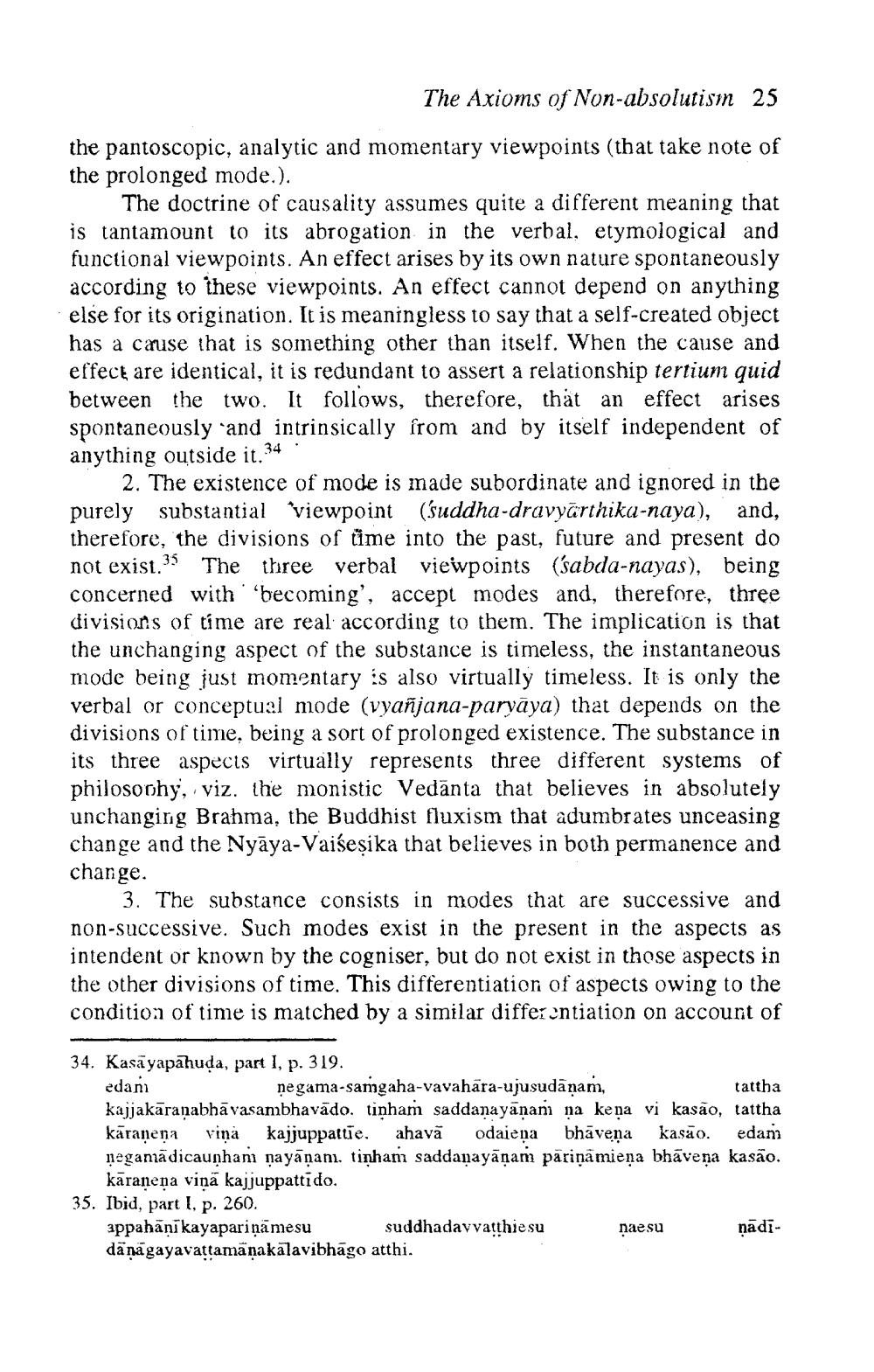________________
The Axioms of Non-absolutisi 25
the pantoscopic, analytic and momentary viewpoints (that take note of the prolonged mode.).
The doctrine of causality assumes quite a different meaning that is tantamount to its abrogation in the verbal, etymological and functional viewpoints. An effect arises by its own nature spontaneously according to these viewpoints. An effect cannot depend on anything else for its origination. It is meaningless to say that a self-created object has a cause that is something other than itself. When the cause and effect are identical, it is redundant to assert a relationship tertium quid between the two. It follows, therefore, that an effect arises spontaneously and intrinsically from and by itself independent of anything outside it. 34
2. The existence of mode is made subordinate and ignored in the purely substantial viewpoint (suddha-dravyärthika-naya), and, therefore, the divisions of time into the past, future and present do not exist. The three verbal viewpoints (sabda-nayas), being concerned with becoming', accept modes and, therefore, three divisions of time are real according to them. The implication is that the unchanging aspect of the substance is timeless, the instantaneous mode being just momentary is also virtually timeless. It is only the verbal or conceptual mode (vyañjana-paryāya) that depends on the divisions of time, being a sort of prolonged existence. The substance in its three aspects virtually represents three different systems of philosophy, viz. the monistic Vedānta that believes in absolutely unchanging Brahma, the Buddhist fluxism that adumbrates unceasing change and the Nyāya-Vaiseșika that believes in both permanence and change.
3. The substance consists in modes that are successive and non-successive. Such modes exist in the present in the aspects as intendent or known by the cogniser, but do not exist in those aspects in the other divisions of time. This differentiation of aspects owing to the condition of time is matched by a similar differentiation on account of
34. Kasayapāhuda, part I, p. 319. edan negama-samgaha-vavahära-ujusudānam,
tattha kajjakāraṇabhāvasambhavādo. tinham saddanayanam na kena vi kasão, tattha karamena viņa kajjuppattie. ahavă odaieņa bhāveņa kasao. edan negamādicauņham nayāṇanı, tinham saddaņayāņam pāriņāmieņa bhāvena kasão.
kāraņeņa viņā kajjuppattido. 35. Ibid, part 1, p. 260. appahāņīkayapariņāmesu suddhadavvatthiesu
nadida nāgayavattamāņakalavibhāgo atthi.
naesu
naos




